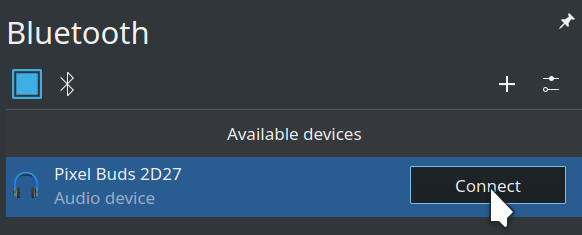Play & Record Sound
Audio Controls
This article shows how to play and record sound using basic audio controls, System Settings, and PulseAudio Volume Control. Some options shown below may not be available for all systems. For example, you must have a display attached to use HDMI sound. Also, not all desktop systems include built-in speakers or microphones.
- Basic Audio Controls
- Play Sound with Speakers
- Play Sound with Headphones
- Play Sound from a Display
- Record Sound with Internal Mic
- Record Sound with External Mic
- Bluetooth
- Troubleshooting
- Revisions
- Disclaimer
Please read the disclaimer before proceeding. We review and update guided solutions regularly. If you have suggestions or requests, please write support@kfocus.org.



















